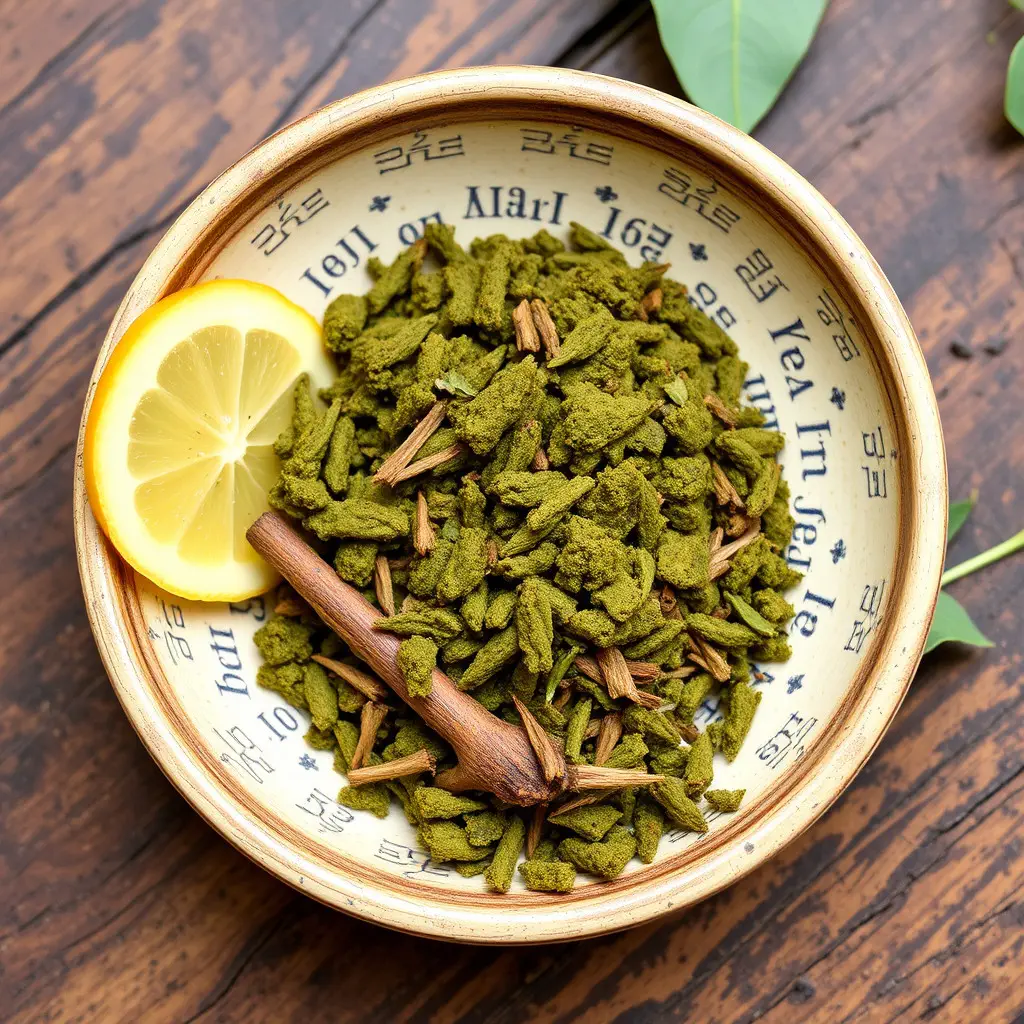Kratom, a Southeast Asian plant with alkaloids like mitragynine and 7-hydroxymitragynine that interact with opioid receptors, has gained popularity as an alternative for managing chronic pain. While it can be taken in capsules or combined with kava through specialized smoking accessories to enhance potency and effects, its legal status and safety remain contentious, necessitating careful consideration and professional healthcare guidance. Kratom's efficacy and the risks of addiction, dependence, and potential side effects require further scientific study. Users must assess their personal tolerance and be aware of drug interactions. Kava smoking accessories claim to increase bioavailability and potency by directly introducing kratom's active compounds into the bloodstream via the lungs, offering a quicker analgesic effect compared to oral consumption. However, users should navigate regional regulations and ensure they source high-quality products from reputable vendors. Chronic pain management often includes natural supplements like kratom, complemented by lifestyle changes and therapies, with the caveat that these holistic approaches should be part of a broader medical strategy that includes conventional treatments. The combination of kratom with kava, when used responsibly and under professional supervision, can be a component of a comprehensive pain management plan that addresses both physical and emotional aspects of chronic pain.
Exploring the multifaceted nature of chronic pain management, this article sheds light on the emerging role of kratom as a potential therapeutic option. Known for its alkaloid-rich profile, kratom’s effects on pain relief are gaining attention within medical communities. We delve into understanding how kratom fits into the broader context of chronic pain management. Additionally, the article highlights the use of kava smoking accessories in enhancing kratom’s efficacy for pain relief, offering insights into how these tools can optimize its effects. Furthermore, we explore strategies to integrate kratom within a comprehensive approach to managing chronic pain, emphasizing its potential synergy with other treatments. This comprehensive guide aims to provide readers with a nuanced understanding of the intersection between kratom and pain management, considering its use alongside holistic practices.
- Understanding Kratom's Role in Chronic Pain Management
- Kava Smoking Accessories: Enhancing Kratom's Effectiveness for Pain Relief
- Integrating Kratom into a Holistic Chronic Pain Strategy
Understanding Kratom's Role in Chronic Pain Management

Kratom, a plant originating from Southeast Asia, has gained attention in the realm of chronic pain management due to its potential analgesic properties. The alkaloids present in kratom leaves, particularly mitragynine and 7-hydroxymitragynine, are thought to interact with opioid receptors in the brain, offering pain relief for some individuals. Users often consume kratom in various forms, including ingestion, capsules, or through kava smoking accessories, which is a method that involves the combination of kratom with kava, another plant traditionally used for its psychoactive effects. This method of consumption can offer a different experience compared to traditional kratom use, as the addition of kava may enhance or alter the effects. It’s important for individuals considering this approach to be aware that the combination of substances can amplify their potency and side effects, necessitating careful dosing and consideration of personal tolerance levels.
The integration of kratom into chronic pain management strategies is not without controversy and cautionary advice from health professionals. While some report significant relief from chronic pain conditions such as fibromyalgia or neuropathic pain, the scientific evidence supporting its efficacy and safety remains limited and requires further investigation. Users who opt for kratom should do so with an understanding of its complex legal status, potential interactions with other medications, and the risk of developing dependence or addiction. Additionally, the use of kava smoking accessories should be approached with caution due to kava’s own pharmacological effects, which can vary widely among individuals. As such, those managing chronic pain with kratom should consult with healthcare providers to ensure safe and effective usage practices.
Kava Smoking Accessories: Enhancing Kratom's Effectiveness for Pain Relief

Kava smoking accessories play a pivotal role in optimizing the delivery and efficacy of kratom for pain relief. Traditionally, kratom is consumed orally, but certain smoking accessories can enhance its bioavailability when combined with kava. The alkaloids present in kratom, namely mitragynine and 7-hydroxymitragynine, are believed to interact synergistically with the psychoactive compounds in kava, offering a more potent analgesic effect. This method of consumption is said to provide quicker relief due to the direct introduction of the active components into the bloodstream via the lungs, as opposed to the gastrointestinal route which can be subject to degradation and metabolism before absorption. Moreover, users report a more pronounced and immediate impact on their pain when using kava smoking accessories, making this an attractive option for those seeking rapid pain management. It’s important for individuals to consider safety and legality when incorporating these practices into their wellness routine, as the use of such accessories may vary by region and the regulatory status of both kratom and kava can be complex. Users should also ensure they are sourcing high-quality, authentic products from reputable vendors to maintain efficacy and safety.
Integrating Kratom into a Holistic Chronic Pain Strategy

Mitigating chronic pain through holistic approaches often involves a multifaceted strategy that can include natural supplements, lifestyle changes, and alternative therapies. Kratom, derived from the leaves of the Mitragyna speciosa tree, has garnered attention as a potential component in such a strategy for managing chronic pain. Its active compounds, mitragynine and 7-hydroxymitragynine, are believed to interact with the body’s opioid receptors, providing analgesic effects without the risk of addiction associated with traditional opioids. When integrating kratom into a holistic pain management plan, it is essential to approach its use with caution and under the guidance of a healthcare provider.
To effectively incorporate kratom, individuals should consider pairing it with other complementary practices, such as regular physical exercise, stress-reduction techniques like mindfulness or yoga, and possibly the use of kava smoking accessories for those who prefer this method of consumption. Kava, another natural substance, is known for its anxiolytic properties and can be a beneficial addition to a pain management regimen, helping to alleviate some of the psychological burdens that accompany chronic pain. It’s important to note that while these holistic methods can offer relief and support overall well-being, they should not replace conventional medical treatment or advice. A balanced approach that respects the efficacy of both traditional medicine and natural remedies is key to achieving sustainable pain management outcomes.
In conclusion, the role of kratom in managing chronic pain presents a promising avenue for individuals seeking relief. The article has explored how kratom can be integrated into a holistic approach to pain management, enhancing its effectiveness through the use of specific kava smoking accessories. These accessories aid in optimizing kratom’s properties for pain relief, offering a natural alternative to traditional pharmaceuticals. As with any treatment plan, it is imperative to consult healthcare professionals when incorporating kratom into one’s health regimen. With careful consideration and guidance, kratom may serve as a valuable addition to a comprehensive pain management strategy, improving quality of life for those affected by chronic pain.






